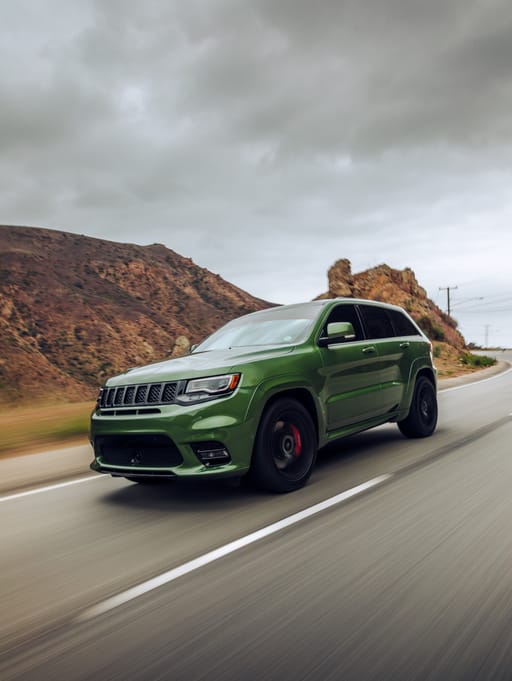The Rise of SUVs: Exploring the Popularity Shift

Once relegated to weekend warriors and off-road enthusiasts, Sport Utility Vehicles (SUVs) have undergone a dramatic transformation in recent decades. They have become the dominant force on roads worldwide, outselling sedans and hatchbacks by a significant margin. This shift in consumer preference begs the question: what factors have fueled the rise of SUVs?
Several key trends have contributed to the SUV's ascension to the top of the automotive sales charts.
Shifting Priorities:
- Safety Perception: SUVs, with their larger size and higher seating position, project an image of increased safety for drivers and passengers. This perception, particularly appealing to families with children, has been a major driver of SUV sales. While safety ratings can vary across models, the general public often associates a higher ride height with better protection in an accident.
- Lifestyle Appeal: Modern SUVs have shed their utilitarian image and are now marketed as luxurious, comfortable, and versatile vehicles. They boast features like sunroofs, leather interiors, and advanced entertainment systems, catering to a desire for a premium driving experience. Additionally, SUVs are often portrayed as ideal companions for active lifestyles, easily accommodating outdoor gear and sporting equipment.
Market Forces:
- Manufacturer Focus: Automakers have heavily invested in the development and marketing of SUVs. With profit margins on SUVs typically higher than sedans, manufacturers have prioritized this category, offering a wider variety of models across different price points and sizes. This strategic shift has resulted in a greater selection for consumers, further fueling the demand.
- Fuel Efficiency Improvements: Historically, SUVs were criticized for their poor fuel economy. However, advancements in engine technology and the introduction of hybrid and electric options have addressed this concern. While some larger SUVs still consume more fuel than smaller cars, the gap has narrowed significantly, making them a more practical choice for many drivers.
Evolving Needs:
- Changing Demographics: The rise of suburban living and an aging population have contributed to the popularity of SUVs. With larger families and potentially limited mobility for some drivers, the increased cargo space and ease of entry and exit offered by SUVs are attractive features.
- Adventure Culture: The growing popularity of outdoor activities like camping, hiking, and off-roading has fueled the demand for vehicles that can handle diverse terrains. While not all SUVs are true off-roaders, the marketing often emphasizes their capability, appealing to the adventurous spirit of many consumers.
Examples:
- The Allure of Crossovers: A sub-segment of SUVs, crossovers, have become particularly popular. These vehicles combine some of the functionality of an SUV with the car-like handling of a sedan. Examples include the Toyota RAV4 and Honda CR-V, which consistently rank among the best-selling vehicles globally. Their blend of practicality, comfort, and fuel efficiency has resonated with a wide range of drivers.
- Luxury SUVs as Status Symbols: For some, SUVs have transcended their utilitarian roots and become status symbols. High-end models from brands like Range Rover, Mercedes-Benz, and BMW project an image of success and sophistication. These vehicles offer top-of-the-line features, technology, and performance, catering to a specific segment of the market.
The Rise is Not Without Challenges:
The dominance of SUVs is not without its critics. Concerns include:
- Environmental Impact: Despite improvements, SUVs generally have a larger carbon footprint compared to sedans due to their size and weight. This has become a significant concern in an era where reducing emissions is a global priority.
- Traffic Congestion: The larger size of SUVs contributes to traffic congestion, particularly in urban areas. Their popularity can exacerbate existing road problems and lead to inefficiencies in transportation systems.
- Safety for Pedestrians and Cyclists: The higher profile of SUVs can create blind spots for drivers, posing a safety risk for pedestrians and cyclists.
The Future of SUVs:
As the automotive industry continues to evolve, the future of SUVs remains to be seen. Manufacturers are likely to continue focusing on improvements in fuel efficiency, safety features, and autonomous driving capabilities. The development of electric and hybrid SUVs could further mitigate environmental concerns. However, rising fuel costs and potential regulations aimed at reducing emissions could also impact the popularity of this class.
In conclusion, the rise of SUVs is a complex phenomenon driven by a confluence of factors. From shifting consumer preferences to strategic marketing by manufacturers, these vehicles have become the go-to choice for many drivers. However, the environmental impact and safety concerns associated with SUVs cannot be ignored. As the industry navigates these challenges, the future of SUVs will depend on their ability to adapt to changing consumer needs and environmental regulations.
